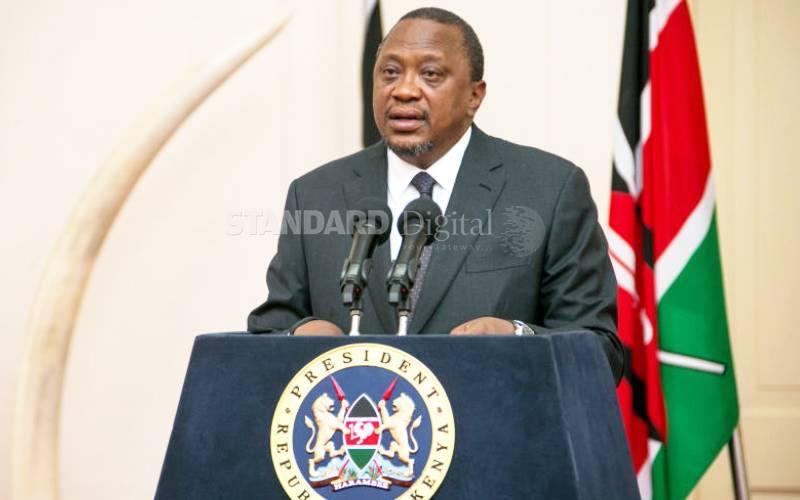
President Uhuru Kenyatta at State House, Nairobi, where he received the 2019 Kenya Population and Housing Census results.
Mount Kenya region has the highest number of registered voters in the country. Six out of 10 people from the region participated in the last election, according to the latest census data released yesterday.
While other regions are trailing with an average of 30 per cent being politically active, Mount Kenya region, which includes Kiambu, Kirinyaga, Nyeri, Embu, Meru, Murang’a, Tharaka Nithi and Nyandarua counties, has double the number of registered voters as a fraction of the total population.
The figure could be higher given that some of the adults might not have registered for voting.
On average, 54 per cent of the population in Nyeri, Murang’a, Nyandarua, Embu, Tharaka Nithi and Meru counties were active in the last elections.
READ MORE
Politicians' enmity is fake; they are just playing games on voters
Why Uhuru and Raila will likely determine Ruto's re-election bid
About 57 per cent of the population in Kirinyaga is registered to vote, Murang’a (56 per cent), Tharaka Nithi (54 per cent), Nyandarua (53 per cent) and Embu at 51 per cent.
Only Kiambu, which is fairly cosmopolitan, has not surpassed the 50 per cent threshold.
Even regions outside of the Mount Kenya region but with a high population of Kikuyu community such as Lamu, Laikipia and Nakuru, also have higher numbers of registered voters according to the data.
Mount Kenya region has dominated the country’s political landscape, largely due to its famed tyranny of numbers which has seen it produce three presidents.
Given the family size in the region is three people, according to the 2019 Kenya Population and Housing Census, it is possible that there are more adults than children.
This explains the disproportionately high number of registered voters as a fraction of the total population.
Last week, speculations on the yet-to-be published Building Bridges Initiative (BBI) proposals sent Central MPs into panic, with Cabinet secretaries from the region closing ranks to reject a parliamentary system.
The fear was that it would devour the region’s huge numbers.
And with the push to move from the current presidential to a parliamentary system, where MPs will have sweeping powers in picking the country’s Prime Minister, the figures are expected to present the next battle front by the political class.
A majority of MPs contacted by The Standard yesterday said they were still studying the figures before they can pronounce themselves. But analysis of the data indicates that tyranny of numbers from certain quarters may no longer be tenable as population figures shift in different regions.
Counties in the Coast and North Eastern regions have the least share of registered voters as a share of the total population, a reflection of low participation in the electoral process.
Only 19 per cent of the total population in Garissa were registered voters. Mandera had 20 per cent, Turkana and Wajir 21 per cent respectively. Samburu at 27 per cent had the lowest percentage of registered voters.
Nairobi experienced the highest population growth, at 40 per cent, despite having the smallest family sizes.
Interestingly, despite talk of the numbers in central Kenya declining, the region experienced 25 per cent growth in population to 5.5 million from 4.4 million ten years ago.
The numbers might not necessarily reflect the growth in the population of the Kikuyu; as counties such as Kiambu have increasingly become cosmopolitan.
Billow Kerrow, the former Senator for Mandera, said the panic among Central Kenya MPs on BBI reports is premised on a glorious past that has been overtaken by the reality of a shrinking population.
“It (Kikuyu population) was 21 per cent of the total population in 1969, but dropped to 17 per cent in 2009,” said Mr Kerrow, also a former shadow Finance minister on Saturday.
“Now that they have the lowest growth rate in the country, their numbers will probably fall below 15 per cent. But the sooner we realise that this nation is for all Kenyans, the better,” added the former legislator.

